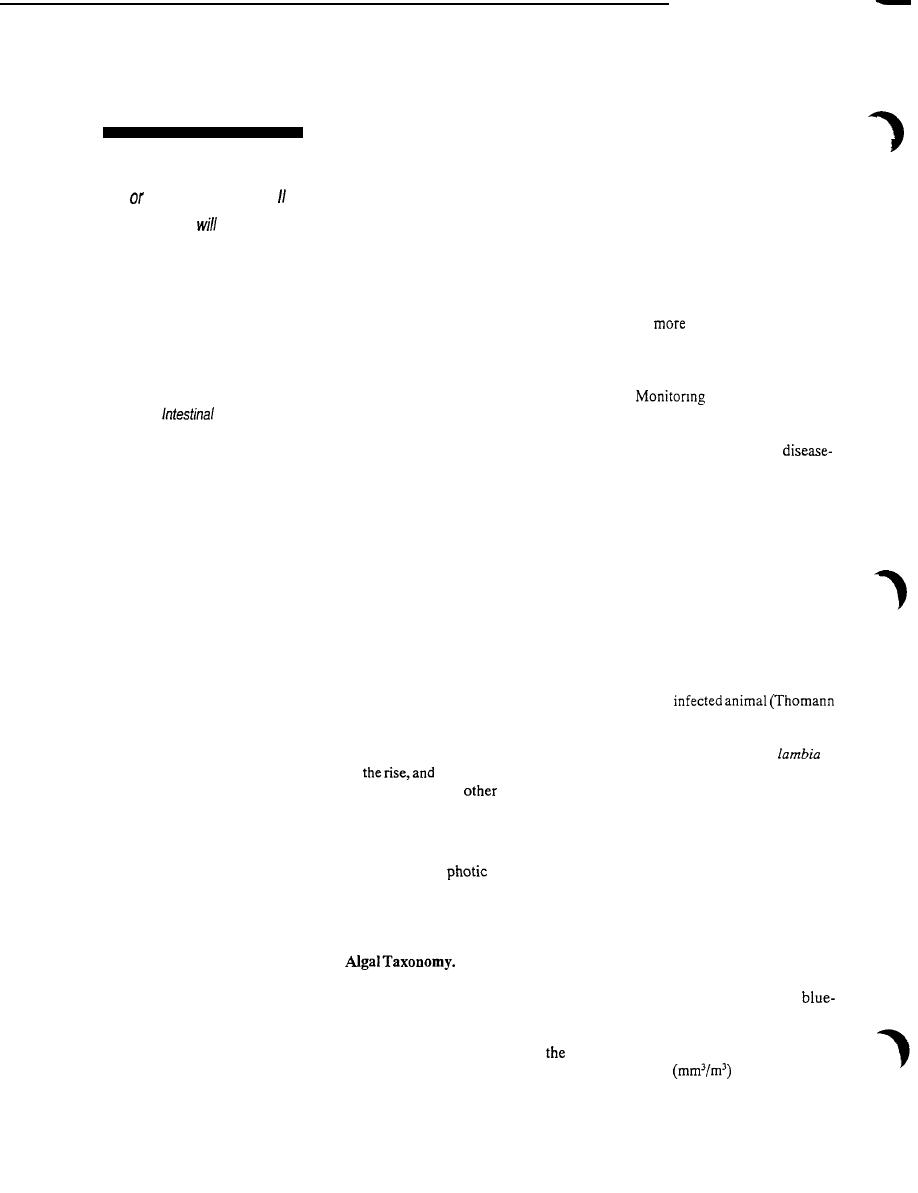
Monitoring Program Objectives
Detection of a trend, impact,
Detection of a trend, impact, or causality under level II conditions will be rare
without adequate pre-, during, and post-implementation data.
causality under level
All of the variables discussed for level I monitoring apply to level II monitoring
conditions
be rare without
objectives. However we discuss additional variables that are most likely to apply
adequate pre-, during, and
to a level II monitoring study in this section.
post-implementation data.
Biological Variables
Level II biological monitoring generally requires
detailed measurements
than are typically found in level I. Approaches for monitoring biological variables
and their explanatory variables are given below.
Pathogens, Viruses, and Intestinal Parasites.
Pathogens, Viruses, and
of the coliform group
Parasites
of bacteria may not provide sufficient information on the safety of water supply,
contact recreation, or shellfish potentially contaminated with pathogens from
animal waste effluent or urban runoff. Animal waste sometimes contains
causing agents that can be persistent for an extended period Of time. Monitoring
specific disease-causing agents and their pathways may be necessary to document
abatement.
Pathogenic Bacteria. Many factors are thought to influence the survival of a
pathogenic bacterium from the time it leaves the colon of the host animal to the
time the pathogen can reach the water course. As the amount of time in waste
storage increases, die-off rates also increase, reducing the risk to water when the
manure is spread on the field or pasture. Temperature and the treatment of the
waste also affect the lifespan of the bacteria.
Viruses. Animal waste is known as a vector for viruses; however, the study of
viruses is not very well developed, nor are monitoring methods highly refined.
Virusesaremeasuredorcountedfromcellcultureoran
and Mueller 1987).
Pathogenic Protozoa. Incidence of intestinal protozoa such as Giardia
is
on
most often humans are reported as the host. In addition, ofconcem
to human health are
pathogens in this group, such as amoeba and nematodes.
Phytoplankton. Variables for monitoring phytoplankton in lakes include taxon-
Phyfoplankton
omy, biovolume, density, chlorophyll a, productivity, and the algal growth
potential test. Phytoplankton are sensitive to the physical and chemical changes
that occur in the
zone. Wind can move phytoplankton to the leeward side
of the lake, making phytoplankton distribution patchy. Seasonal succession can
also hinder trend detection. With careful choice of variables, explanatory vari-
ables, and sampling design, phytoplankton monitoring can show impact.
Phytoplankton species composition may respond to changes in
nutrients, light, and other physical, chemical, and biological features of the water
column. Species and abundance information can be used to track nuisance
greens or other important species for detecting trends.
Biovolume. Biovolume is one of
variables, along with density and chlorophyll
a, to monitor phytoplankton production. Biovolume
is the volume of
living algal material in a unit area (NCNRCD 1992). The volume of individual
cells measured as part of the procedure to calculate biovolume (NCNRCD 1992).
Biovolume and density measurements may also help to track algal blooms.
3.17



 Previous Page
Previous Page
